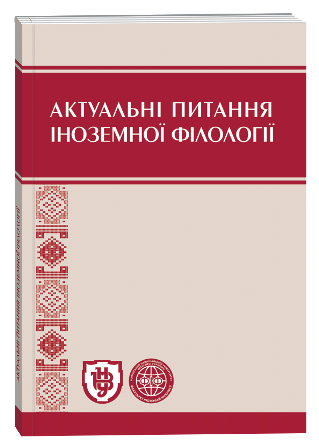RENDERING OF SHAKESPEARE’S SEMANTIC AMBIGUITIES IN UKRAINIAN TRANSLATIONS OF “OTHELLO. THE MOOR OF VENICE” (BY V. SCHERBANENKO, P. KULISH, I. STESHENKO)
Keywords:
semiotics, code, drama translation, ambiguity, semantically ambiguous, ShakespeareAbstract
The article presents an insight to Shakespeare’s “Othello. The Moor of Venice” through semioticsas well as an analysis of his literary codes, in particular semantically ambiguous words. Semiotics is seen as an efficient tool for the theory of drama translation since its methodology enables to identify principles of interaction between signs and codes (most notably, language codes) in different, sometimes unexpected contexts. Intricate ways in which signs and codes interplay is a powerful factor that affects translator’s decisions (resulting sometimes in rather extreme choices of equivalents), however allows translators discover new meaningsof plainly conventional concepts. Ambiguity is not only perceived as one of inherent characteristics of poetic language as it is but also as an individual feature of Shakespeare’s dramatic language for the majority of his plays, even though partially, are written in verse. Alongside with that, ambiguity is analyzed through R. Barth’s semiotic definition of sign that, applied to Shakespeare’s ambiguous linguistic units, entitles the latter to be intentionally used by the playwright for promotion of concrete ideas in the tragedy. Some of the concepts learned from W. Empson’s classification of ambiguity facilitated our search of Shakespeare’s ambivalent linguistic units eventually spotted in the text as similes. The comparative analysis of Ukrainian translations of the play (by I. Steshenko, V. Scherbanenko, P. Kulish) showed that translators resorted to loan translation, omissions and transpositions while rendering semantically ambiguous units present in the play (in Ukrainian versions represented by complex similes). Finally, it wasidentified thatthe majority of semantically ambiguous units were found in the speech of the main villain of the tragedy –Yago.
References
Барт Р. Вибрані роботи: Семіотика: Поетика / пер. з фр., сост., заг.ред. і вступ. ст. Г. К. Косікова. – М. : Прогрес, 1989. – 616 с. 2. Шекспір В. Отелло / пер. В. Щербаненко. – Харків : Держ. вид-во України, 1927. – 230 с.
Шекспір В. Отелло / пер. І. Стешенко. – К. : Дніпро, 1986. – 696 с.
Шекспір В. Отелло. Шекспірові твори / пер. П. Куліш. – Львів : Друкарня Товариства ім. Шевченко, 1882. – 418 с.
Лотман Ю. М. Семіосфера. Посеред світів думок / пер. з рос. В. Болеславський. –СПб : Искусство – СПБ, 2000. – 704 с.
Еко У. Відсутня структура: Введення в семіологію / пер. з італ. В. Резник і А. Погоняйло. – СПб : Symposium, 2004. – 583 c.
EmpsonW. Seven Types of Ambiguity / W. Empson. – Harmondsworth : Penguin, 1973.– 256 р.
Shakespeare W. The Tragedy of Othello, the Moor of Venice / W. Shakespeare. – New York : Washington Square Press, 1993. – 314 p.
Downloads
Published
How to Cite
Issue
Section
License

This work is licensed under a Creative Commons Attribution-NonCommercial 4.0 International License.







